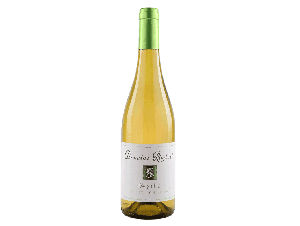You have no items in your shopping cart.
Wine Saint-Chinian
-
Top Selling
-
Top Selling
-
Top Selling-24%
Saint-Chinian is among the wines prized by Cicero
The vineyard of Languedoc is one of the oldest, along with that of Provence. It was indeed under Roman occupation, that the vine culture developed in the region. The appellation is located on the remains of the "Via Domitia", a Roman road linking Italy and Spain. Trade was therefore very active in the region throughout the Roman occupation, and the wines of the Languedoc were even taken to Rome, and tasted by ancient personalities such as Cicero or Pliny the Younger, who mentioned these wines in their writings. When the Romans left the country, the Benedictine monks took over the cultivation of the vine around the 8th century and throughout the Middle Ages.
The wines were then produced in the plains, to favour high profitability and large volumes. Unfortunately, mildew, powdery mildew and phylloxera halted this development, and put a temporary end to wine production. It was only after the Second World War that the Languedoc vineyards experienced numerous periods of overproduction, and were completely rethought: plots were planted to find quality, not profitability. In 1982, the AOC Saint-Chinian is registered for its red wines, and since 2004 the white wines are also recognised.
The Saint-Chinian appellation covers more than 3,000 hectares, so it is the 4th largest AOC in the Languedoc. The wines are 85% red, 10% rosé and 5% white. Annual production averages around 120,000 hectolitres per year.
The Saint-Chinian terroir produces very different wines
The Saint-Chinian appellation is located in the heart of the mountains, at the foot of the Massif-Central, facing the Mediterranean, and limited to the north by the garrigue. A river, the Orb, runs through it. This terroir is particularly interesting for vine cultivation, and this for several reasons. First of all, the different types of soil are loaded with different characteristics: the schist, present in the north, in the soils around Faugères, allow the elaboration of much more concentrated, smoky wines with roasted notes.
On the other hand, the wines produced in the south of the appellation are much fresher and fruitier, as thesoils are mostly composed of clay and limestone, which retain the rare rainwater better. The raisin is therefore sweeter, fresher, and the wines therefore have a greater capacity for ageing than the wines produced in the north of the appellation.
The climate is typically Mediterranean: mild winters, hot and dry summers, very little rain. The winds can be very cold, such as the tramontana, which regulates the temperature of the soil and therefore of the berries, and thus brings a little freshness and acidity.
The reds are the result of obligatory blends of Syrah, Mourvèdre, Grenache, Cinsault, Carignan and Lledoner Pelut. It is not possible to obtain the Saint-Chinian appellation by producing a wine from a single grape variety.
The whites are mainly made from blends of Grenache Blanc, Marsanne, Roussane, Vermetino, Viognier, Carignan and Clairette, the sought-after aromas are of white flowers and sometimes citrus, fresh herbs.
Rosés are often made from a single grape variety, from Cinsault, and therefore do not benefit from the AOC. To obtain the AOC, they must be composed of a blend of the different grape varieties also used to make the reds. The methods of vinification are very free for all the colours.
What to expect when tasting a Saint-Chinian?
Saint-Chinian reds
The Saint-Chinian wines from the north of the AOC have a beautiful, very dark and concentrated colour, while the wines produced on the clay-limestone soils are a beautiful ruby red with purple hues. The aromas of the northern wines are very torrefied, smoky and cocoa-like, while the southern wines are more fruity and floral, especially with aromas of violets. On the palate, the wines from the schistous zone are not very acidic, and are very quickly velvety, which is particularly pleasant. They should be consumed within 5 years of the harvest, and are not wines for ageing, as they are too low in acid. Southern wines are fat on the palate, tannic, and offer a refreshing acidity. The best vintages aged in casks can be kept for a decade.White Saint-Chinian
The white Saint-Chinian wines have a beautiful intense yellow colour, full of light and sunshine. Their aromas are mainly those of white flowers, they are aromatic, fresh and dry wines.Saint-Chinian rosés
These wines are very often pink in colour, varying in intensity from very bright to very pale. The nose is often quite discreet, but elegant, and mainly on the fruit, a little acidulous. On the palate they are fruity wines, with a lot of acidity and therefore freshness, and well balanced as they are quite round.How to pair a Saint-Chinian
.The reds will be good pairings with smoked charcuterie, red meats, game. The whites will be very good companions for aperitifs, while the rosés will be able to withstand the spiciness of Indian or Asian dishes.
The Saint-Chinian domains to discover
Domaine Canet-Valette
Generations of grape growers have succeeded one another in the family of Marc Valette, who decided in 1992 to start making his own wine, in his own image, and in the image of his grapes that he knows so well. This cuvée is organic, it perfectly embodies the southern wines of the appellation, full of fruit, freshness and finesse.Domaine Rimbert
Since 1996 Jean-Marie Rimbert has been making his wines organically. This independent winemaker masters his whites as well as his reds. This white is particularly fresh and voluminous in the mouth, revealing that the south knows how to make fresh and elegant white wines.Blanquette méthode ancestrale
Coteaux-du-Languedoc Cabrières
Coteaux-du-Languedoc Grès-de-Montpellier
Coteaux-du-Languedoc La Méjanelle
Coteaux-du-Languedoc Montpeyroux
Coteaux-du-Languedoc Pézenas
Coteaux-du-Languedoc Saint-Drézéry
Coteaux-du-Languedoc Terres de Sommières
Côtes-du-Roussillon Les Aspres
Côtes-du-Roussillon-Villages Caramany
Côtes-du-Roussillon-Villages Latour-de-France
Côtes-du-Roussillon-Villages Lesquerde
Languedoc Grés de Montpellier
Muscat-de-Saint-Jean-de-Minervois
Pays d'Oc Gewurztraminer
Saint-Chinian Berlou
Saint-Chinian Roquebrun
Vin de Pays Cathare
Vin de Pays de Cassan
Vin de Pays de Caux
Vin de Pays de Cucugnan
Vin de Pays de la Cité de Carcassonne
Vin de Pays de la Côte Vermeille
Vin de Pays de la Haute Vallée de l'Aude
Vin de Pays de la Vallée du Paradis
Vin de Pays de la Vaunage
Vin de Pays de la Vicomté d'Aumelas
Vin de Pays de Saint-Guilhem le Désert
Vin de Pays des Collines de la Moure
Vin de Pays des Coteaux d'Ensérune
Vin de Pays des Coteaux de Miramont
Vin de Pays des Coteaux de Murviel
Vin de Pays des Coteaux de Peyriac
Vin de Pays des Coteaux du Pont du Gard
Vin de Pays des Coteaux du Salagou
Vin de Pays des Coteaux Flaviens
Vin de Pays des Côtes Catalanes
Vin de Pays des Côtes de Prouilhe
Vin de Pays des Côtes de Thau
Vin de Pays des Côtes de Thongue
Vin de Pays des Côtes du Brian
Vin de Pays des Hauts de Badens
Vin de Pays des Pyrénées-Orientales
Vin de Pays des Sables du Golfe du Lion
Vin de Pays du Mont Baudile
Vin de Pays du Torgan
Vin de Pays du Val de Montferrand



































 TWIL - Achat de Vin
TWIL - Achat de Vin


